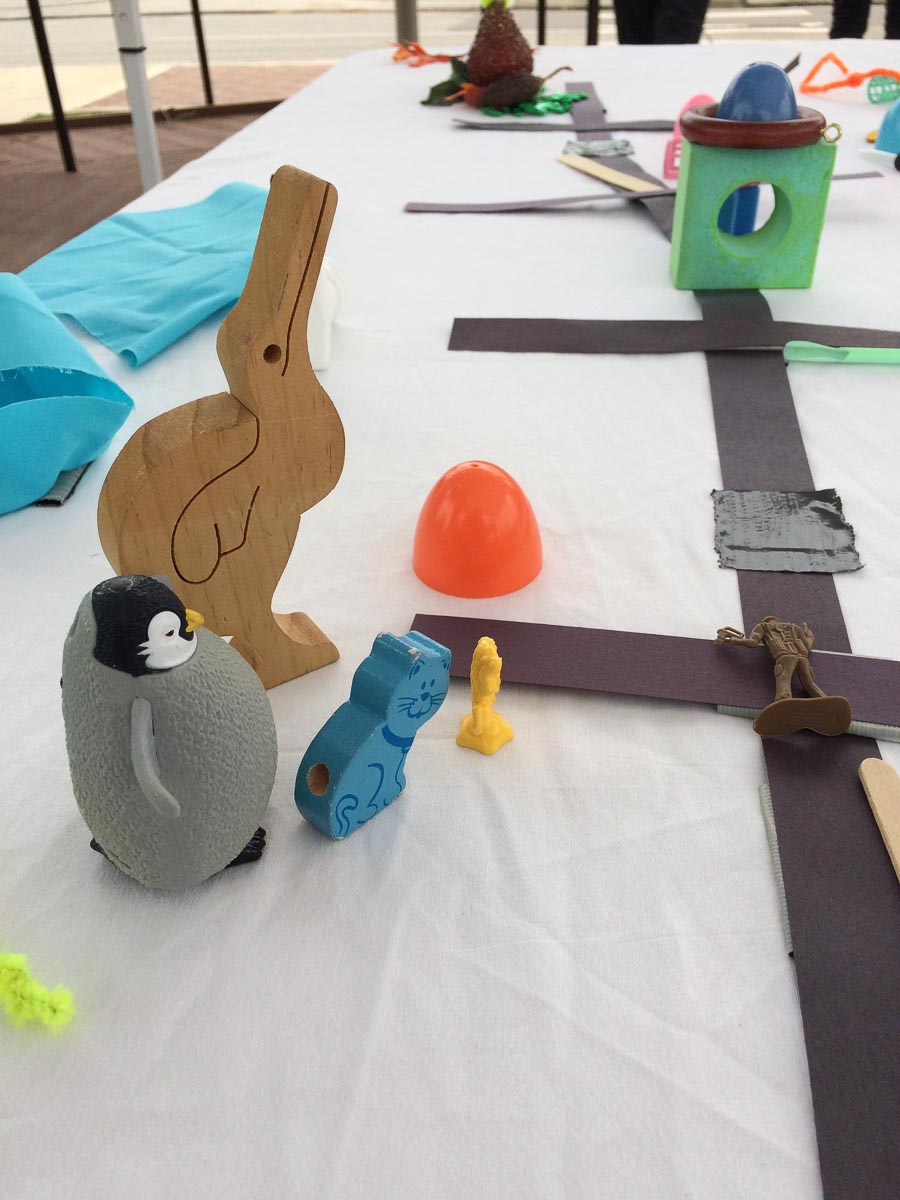Dog parks are great, but what’s even better? How about an all-animal park, complete with cats, penguins, and gigantic kiwi birds.
That was the suggestion of one school-aged East End resident, who was asked to use recycled trinkets to design his ideal vision for the area surrounding Navigation Boulevard.
Inspired and encouraged by urban planner James Rojas – who visited Houston this spring to discuss his innovative and playful approach to city planning – Raj Mankad from the Rice Design Alliance and I decided to try a similar exercise.
Rojas believes that imaginative play can help engage residents in the urban planning and design process in meaningful ways. We wanted to see if he was right.
Raj and I set up shop on the beautiful Navigation Esplande in the heart of the East End during the city of Houston’s popular Sunday Streets program. The area, just east of downtown, is one of the oldest parts of Houston. Initially home to German immigrants, over the years it evolved into a community with a strong Mexican-American heritage.
Despite its history and proximity to the city center, huge swaths of the East End are undeveloped. But that's quickly changing, thanks to a new light-rail that goes through the heart of the neighborhood and $300,000 townhouses that are popping up just blocks from shotgun shacks that rent for a few hundred dollars a month.
As the eyes of the city turn to the East End, we wanted to see if we could get residents to show us their own ideas for the neighborhood. Laying out a rough estimation of the nearby street grid and setting out piles of colorful junk with which to build – per Rojas’ technique – our table drew the attention of many passersby, both young and old, who had no shortage of suggestions on how to improve the East End.
Some visions are unlikely to ever come to fruition—like seven-year-old Isaiah’s idea to construct a bouncy house playground alongside the road or build a swimming pool in the middle of the Esplanade (though both sound fun). I, for one, am holding out hope that the proposed Penguin Park has legs.
But the majority of ideas -- no matter how creatively they were represented (yes, an old hair curler can symbolize a park bench) – touched on the shared desire among many residents to see improvements to their community’s built environment.
A brother and sister, both in high school, talked about the fact that there were no good parks or playing fields in the community. The football helmets in the photo below represent their hope for a new park. Their mother wanted to see even more recreation opportunities and increased safety. She placed the two blocks down on the grid and declared one a recreation center and the other an extra police substation. Both, she said, would make the community a better place to call home.
Another group of women declared that they wanted the Esplanade to run all the way to Wayside Drive, nearly 3 miles to the east of where it currently stops. They loved the Esplanade’s collection of trees, benches, and tables. Talking as their children designed themselves new parks, the women lamented the lack of space for children to play. A longer, greener esplanade would provide that space.
One young girl designed what she called the “egg shop,” which, with guidance from her mother, eventually morphed into a grocery store. A deluge of rain pushed more walkers and bikers under our tent and a series of conversations about the East End’s lack of a supermarket then sprung up. All egged on by the girl’s creation.
Even kids’ far-out ideas – like the park teaming with wild animals – had merit, showing a deep desire for open spaces and an interest in connecting with nature while living in the heart of the city.
While Sunday’s visions aren’t tied to any formal plans or any process to put them into place, the activity showed the power of Rojas’ approach. Bringing play into planning allows people who might not otherwise express an opinion the chance to weigh in.
Replacing the bureaucratic, jargon-laden public meeting with a table, a collection of random items, and a community’s imagination can lead to some remarkable outcomes.




